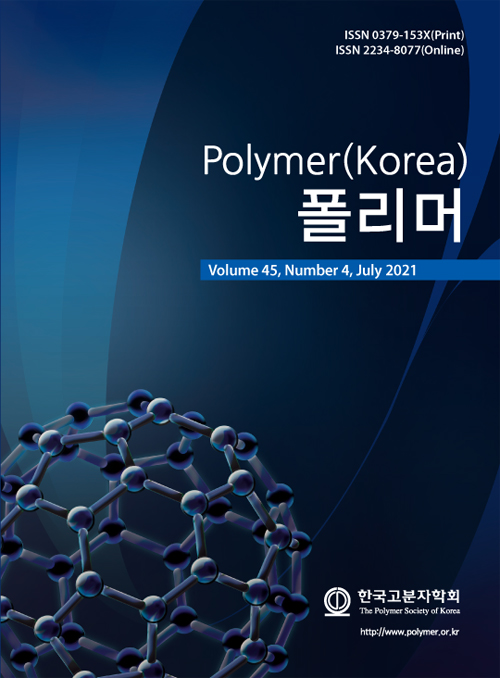- Mechanical and Damping Properties of Graphene-Modified Polyurethane-Epoxy Composites for Structures
Civil Engineering, Nanjing Forestry University, Nanjing 210037, China
*Civil Engineering, Southeast University, Nanjing 211189, China- Graphene으로 개질된 폴리우레탄-에폭시 복합체의 기계적 물성과 Damping 특성
Reproduction, stored in a retrieval system, or transmitted in any form of any part of this publication is permitted only by written permission from the Polymer Society of Korea.
Polyurethane (PU) has received extensive attention in structural engineering due to its excellent mechanical properties and damping properties. In this research, graphene-modified PU-epoxy composites are prepared for the application in structural engineering. The mechanical properties and damping properties of the composites with different contents of graphene are investigated. The damping properties of the composites were also investigated by performing dynamic mechanical analysis (DMA). The results showed that with the increase of graphene content, the tear strength of the composites decreased from 52 to 39 MPa. Due to the enhancement of appropriate amount of graphene, the tensile strength and elongation at break increase to the maximum value, being 16 MPa and 675%, respectively. And DMA tests showed that the damping properties reach the optimal values when the graphene content is 0.2%. The large damping temperature range (ΔT0.5) is 33 °C, from -2.9 to 30.1 °C. The peak of loss factor (ηmax) is 0.92 and the integral area (TA) is 36 °C, much higher than those of the pure PU-epoxy composites. In addition, scanning electron microscopy (SEM) results show that agglomeration appears with higher graphene content.
Keywords: polyurethane, graphene, structural engineering, mechanical properties, damping properties.
- Polymer(Korea) 폴리머
- Frequency : Bimonthly(odd)
ISSN 0379-153X(Print)
ISSN 2234-8077(Online)
Abbr. Polym. Korea - 2023 Impact Factor : 0.4
- Indexed in SCIE
 This Article
This Article
-
2021; 45(4): 483-490
Published online Jul 25, 2021
- 10.7317/pk.2021.45.4.483
- Received on Sep 11, 2020
- Revised on Mar 14, 2021
- Accepted on Apr 12, 2021
 Correspondence to
Correspondence to
- Yi Su, Ting Li
-
Civil Engineering, Southeast University, Nanjing 211189, China
- E-mail: 230208106@seu.edu.cn









 Copyright(c) The Polymer Society of Korea. All right reserved.
Copyright(c) The Polymer Society of Korea. All right reserved.